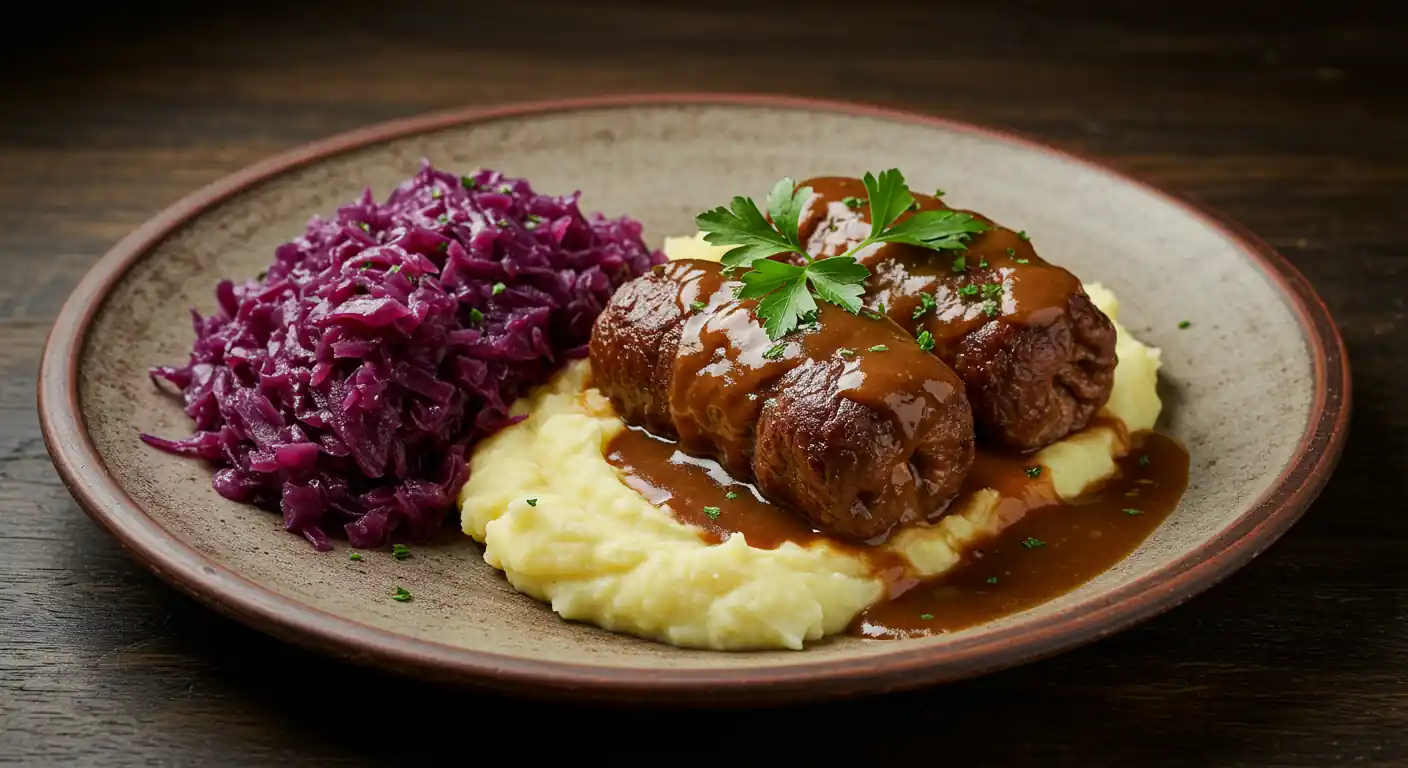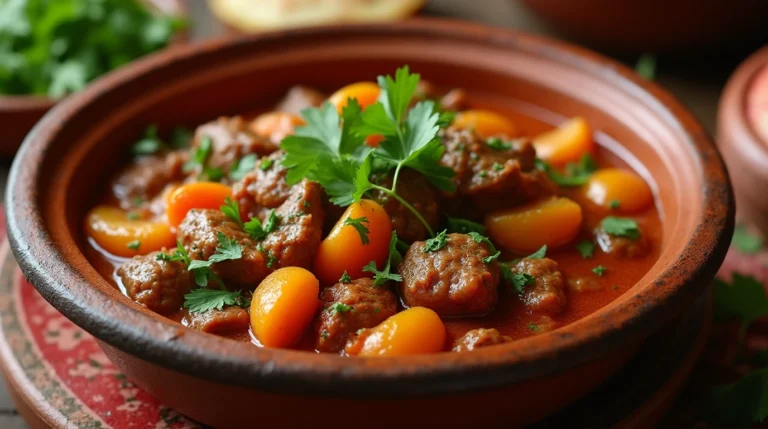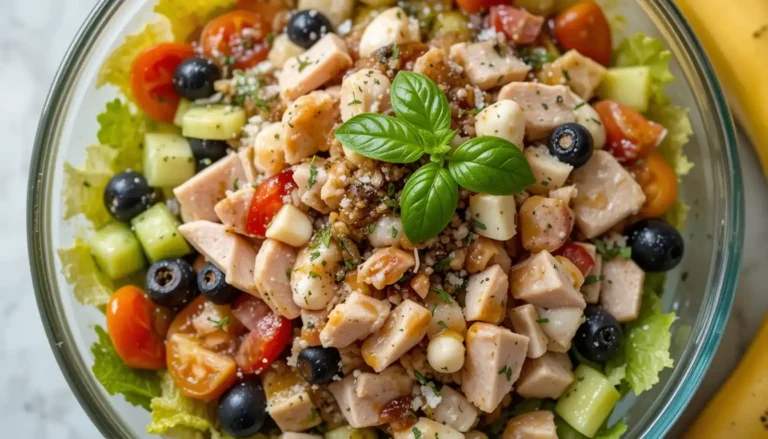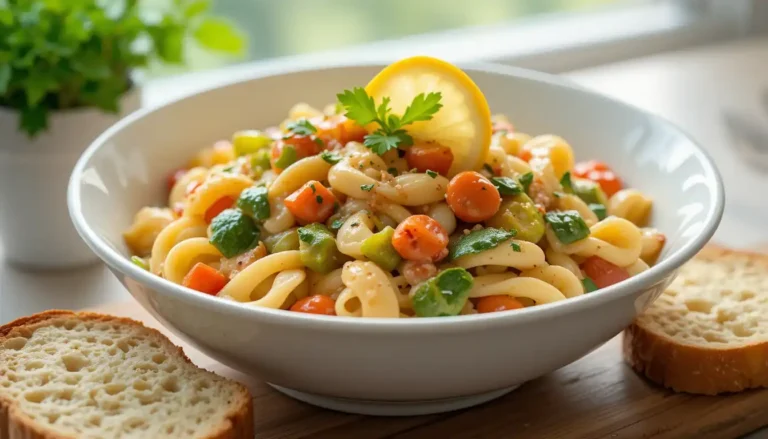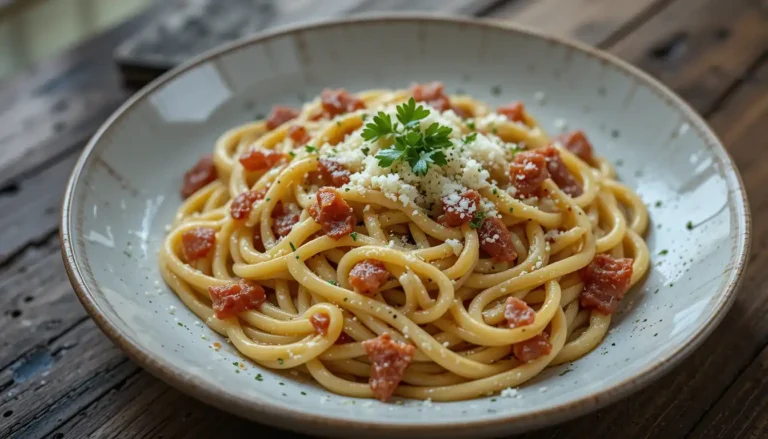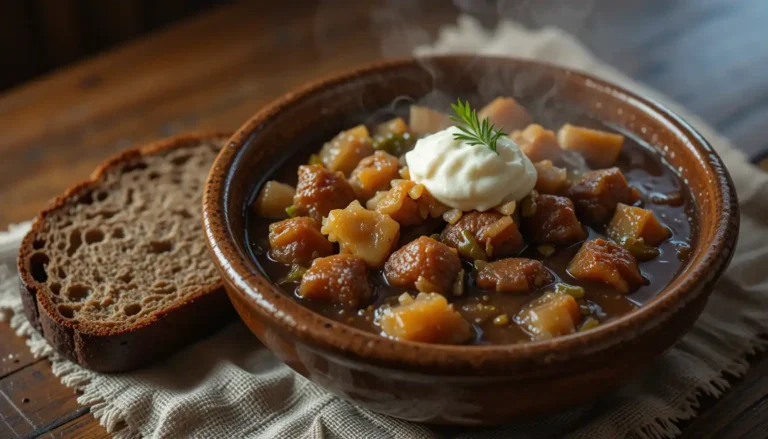Amazing Rouladen: Your Ultimate Easy Recipe
Ah, Rouladen. If ever there was a dish that screams German comfort food, this is it. These savory beef rolls, filled with a tangy and flavorful mix, slowly braised until melt-in-your-mouth tender, and swimming in a rich gravy – well, it’s the kind of food that warms you from the inside out.
Often reserved for Sunday dinners or special occasions in Germany, making Rouladen might seem intimidating at first glance, but I promise you, it’s totally achievable in your own kitchen. It takes a little time, yes, but most of that is hands-off simmering while your house fills with the most incredible aroma.
This recipe breaks down how to make traditional beef Rouladen step-by-step. We’ll cover everything from choosing the right cut of beef to getting that perfect, rich gravy. So, roll up your sleeves, and let’s make some delicious German Rouladen!
What Exactly is Rouladen?
For those unfamiliar, Rouladen (the word is plural in German, referring to the rolls) are thin slices of beef, typically top round or flank steak, that are spread with mustard, then layered with bacon, onions, and pickles (yes, pickles!). They are then rolled up tightly, secured, seared to develop flavor, and finally braised slowly in a savory liquid until incredibly tender.
The braising liquid, enriched by the beef juices and filling ingredients, becomes the base for an absolutely essential, deeply flavorful gravy that’s perfect for drizzling (or flooding!) over the Rouladen and any accompanying side dishes. While beef (Rinderrouladen) is the most common, variations exist, but today we’re focusing on the classic beef Rouladen.
Why You’ll Fall in Love with This Rouladen Recipe
- Authentic German Flavor: This recipe sticks closely to traditional methods, giving you a genuine taste of German home cooking.
- Incredibly Tender Beef: The slow braising technique guarantees beef that you can practically cut with a fork.
- Rich, Savory Gravy: The gravy is liquid gold – complex, beefy, and absolutely delicious. No Rouladen experience is complete without it!
- Impressive Yet Achievable: While they look fancy, the steps are straightforward. Perfect for impressing guests or treating your family.
- Comfort Food King: It’s the ultimate hearty, satisfying meal, especially on a chilly day.
Ingredients
Getting the right ingredients is key. Here’s what you’ll need:
For the Rouladen Rolls:
- Beef: 4 large, thin slices of beef top round or flank steak (about 1/4 inch or 0.5 cm thick, each slice roughly 6-8 oz / 170-225g). Ask your butcher to cut them for Rouladen if possible.
- Mustard: 4 tablespoons German mustard (or Dijon mustard if German isn’t available). Go for something sharp!
- Bacon: 4-8 slices of good quality bacon (streaky bacon works well).
- Onions: 1 medium onion, finely chopped.
- Pickles: 4 medium dill pickles (German-style Gewürzgurken are ideal, but any good quality dill pickle will work), cut into spears or chopped, depending on preference.
- Salt: To taste.
- Black Pepper: Freshly ground, to taste.
- Fat for Searing: 2 tablespoons vegetable oil, canola oil, or lard.
For the Braising Liquid & Gravy:
- Mirepoix (Optional but Recommended): 1 carrot, 1 celery stalk, 1 small onion – all roughly chopped. This adds depth to the gravy.
- Tomato Paste: 1 tablespoon.
- Red Wine (Optional): 1/2 cup dry red wine (like Pinot Noir or Merlot). Adds complexity, but can be replaced with more broth.
- Beef Broth: 3-4 cups good quality beef broth (low sodium is best so you can control salt).
- Bay Leaf: 1-2 bay leaves.
- Juniper Berries (Optional): 4-5 juniper berries, slightly crushed. Adds a traditional German flavor note.
- Cornstarch Slurry (for thickening): 1-2 tablespoons cornstarch mixed with 2-3 tablespoons cold water (if needed).
- Salt and Pepper: To taste for the final gravy.
Equipment You’ll Need
- Meat Mallet
- Cutting Board
- Sharp Knife
- Large Skillet or Dutch Oven (heavy-bottomed, oven-safe if possible)
- Kitchen Twine or Wooden Toothpicks/Skewers
- Tongs
- Whisk
- Fine-mesh Sieve (optional, for a smoother gravy)
Step-by-Step Guide
Let’s break down the process of making these amazing German beef rolls.
Step 1: Prepare the Beef Slices
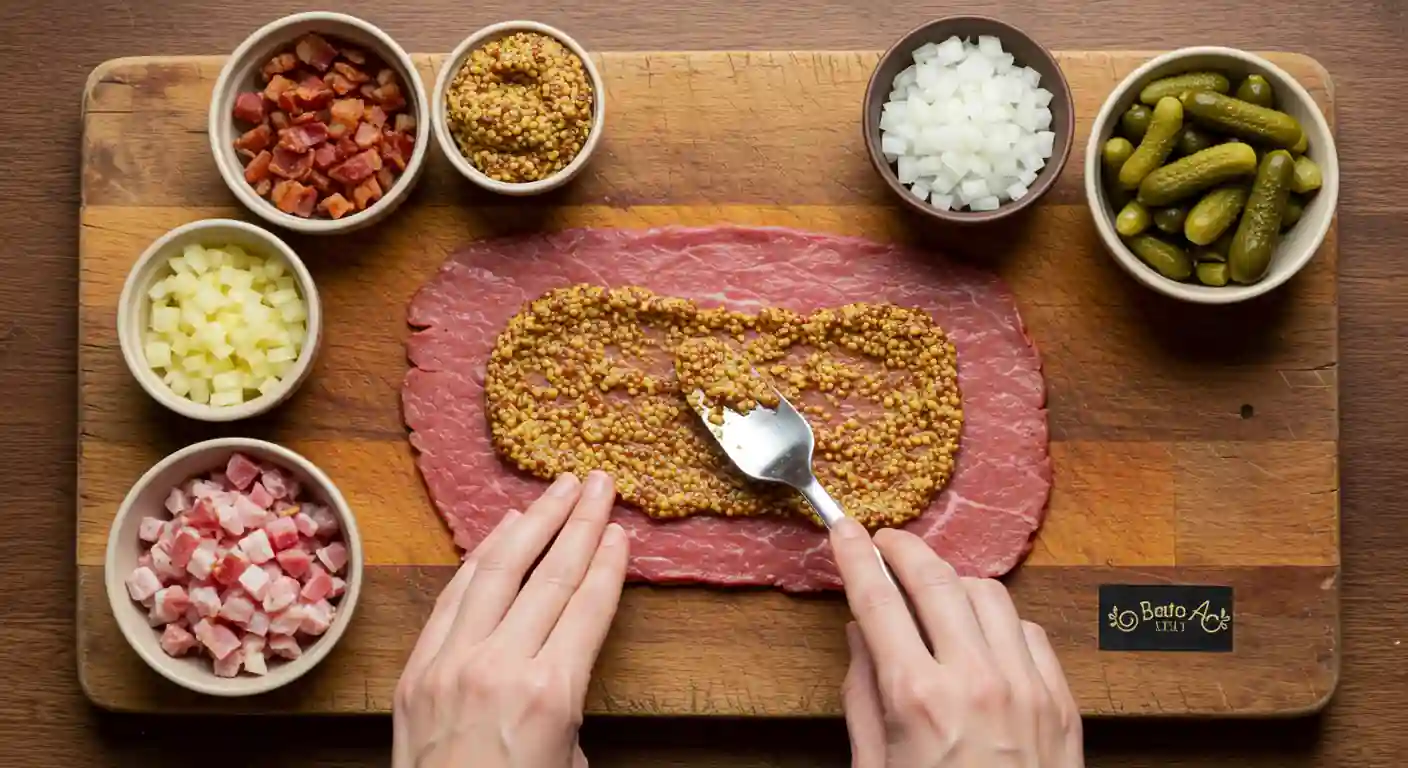
- Lay Out the Beef: Place the beef slices on a large cutting board or clean work surface. If they aren’t already thin (about 1/4 inch), cover them with plastic wrap.
- Pound Thinly: Using the flat side of a meat mallet, gently but firmly pound the beef slices to an even thickness of about 1/8 to 1/4 inch (around 0.5 cm). Be careful not to tear the meat. Pounding makes the Rouladen more tender and easier to roll.
- Season: Remove the plastic wrap. Season one side of each beef slice generously with salt and freshly ground black pepper. This side will be the inside of your Rouladen.
Step 2: Assemble the Rouladen
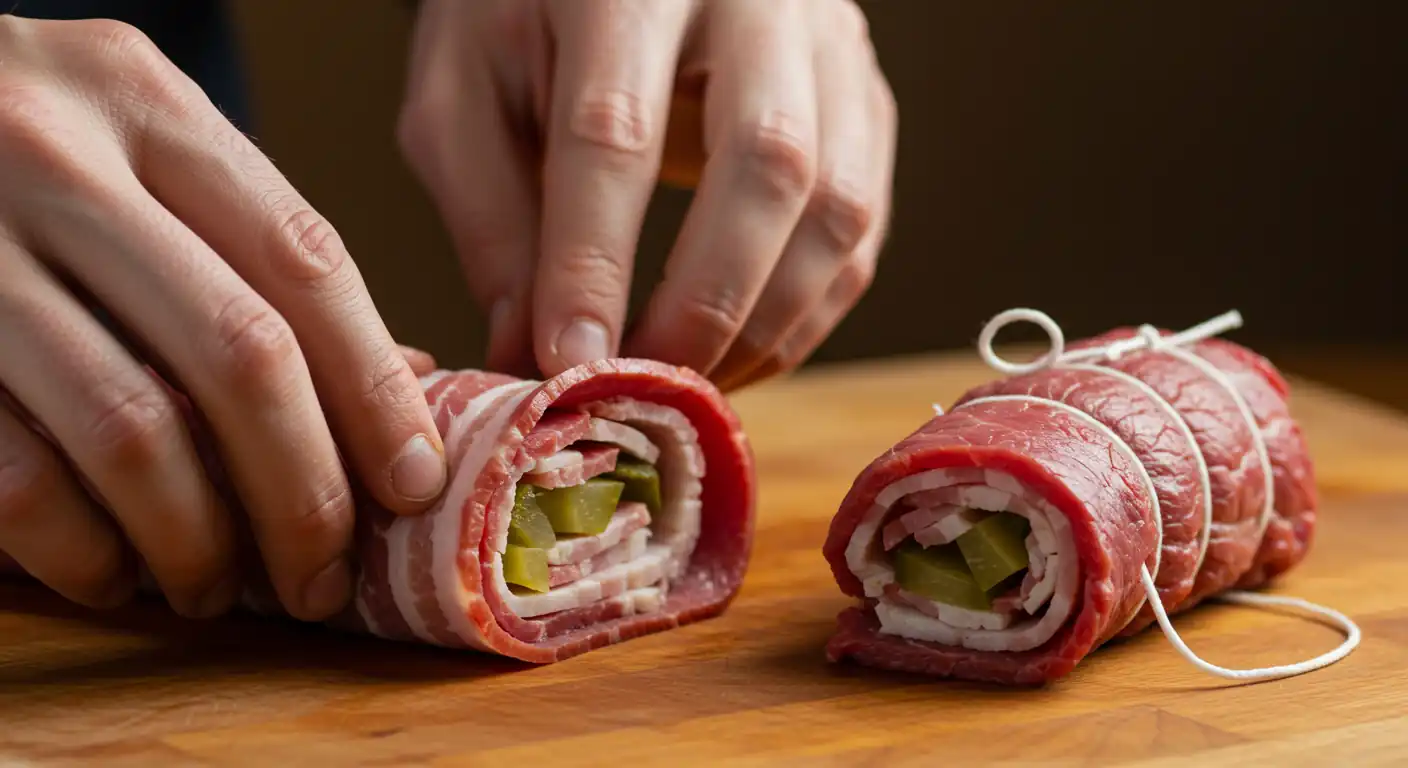
- Spread Mustard: Spread about 1 tablespoon of mustard evenly over the seasoned side of each beef slice, leaving a small border around the edges.
- Layer the Filling:
- Place 1 or 2 slices of bacon lengthwise onto each mustard-coated beef slice.
- Sprinkle a quarter of the finely chopped onions over the bacon.
- Place pickle spears (1-2 per roll) or chopped pickle near one of the shorter ends of the beef slice. This end will be where you start rolling from.
- Roll Them Up: Starting from the short end with the pickles, tightly roll up each beef slice, tucking in the sides slightly as you go if possible, to keep the filling secure.
- Secure the Rolls: Secure each Rouladen roll firmly using kitchen twine tied around it in a couple of places, or by inserting 2-3 wooden toothpicks or small skewers diagonally through the seam and roll. Make sure they are secure enough to hold together during searing and braising.
Step 3: Sear the Rouladen
- Heat the Fat: Heat the oil or lard in your large skillet or Dutch oven over medium-high heat. The fat should shimmer slightly.
- Sear: Carefully place the secured Rouladen rolls into the hot fat, seam-side down first if possible (though not critical). Sear the Rouladen on all sides until they are nicely browned. This step is crucial for developing flavor (Maillard reaction!). Work in batches if necessary to avoid overcrowding the pan.
- Remove Rouladen: Once browned all over, use tongs to remove the Rouladen from the pot and set them aside on a plate.
Step 4: Create the Braising Liquid Base
- Sauté Aromatics: If using, add the chopped carrot, celery, and the second onion (the mirepoix) to the same pot. Sauté over medium heat for 5-7 minutes, scraping up any browned bits (fond) from the bottom of the pot, until the vegetables soften and start to brown slightly.
- Add Tomato Paste: Stir in the tomato paste and cook for another minute until it darkens slightly.
- Deglaze (Optional): Pour in the red wine (if using). Bring it to a simmer and scrape the bottom of the pot vigorously to lift off all those flavorful browned bits. Let the wine reduce by about half. If not using wine, you can deglaze with a splash of the beef broth.
- Add Broth and Seasonings: Pour in the beef broth. Add the bay leaves and juniper berries (if using). Bring the liquid to a simmer.
Step 5: Braise the Rouladen
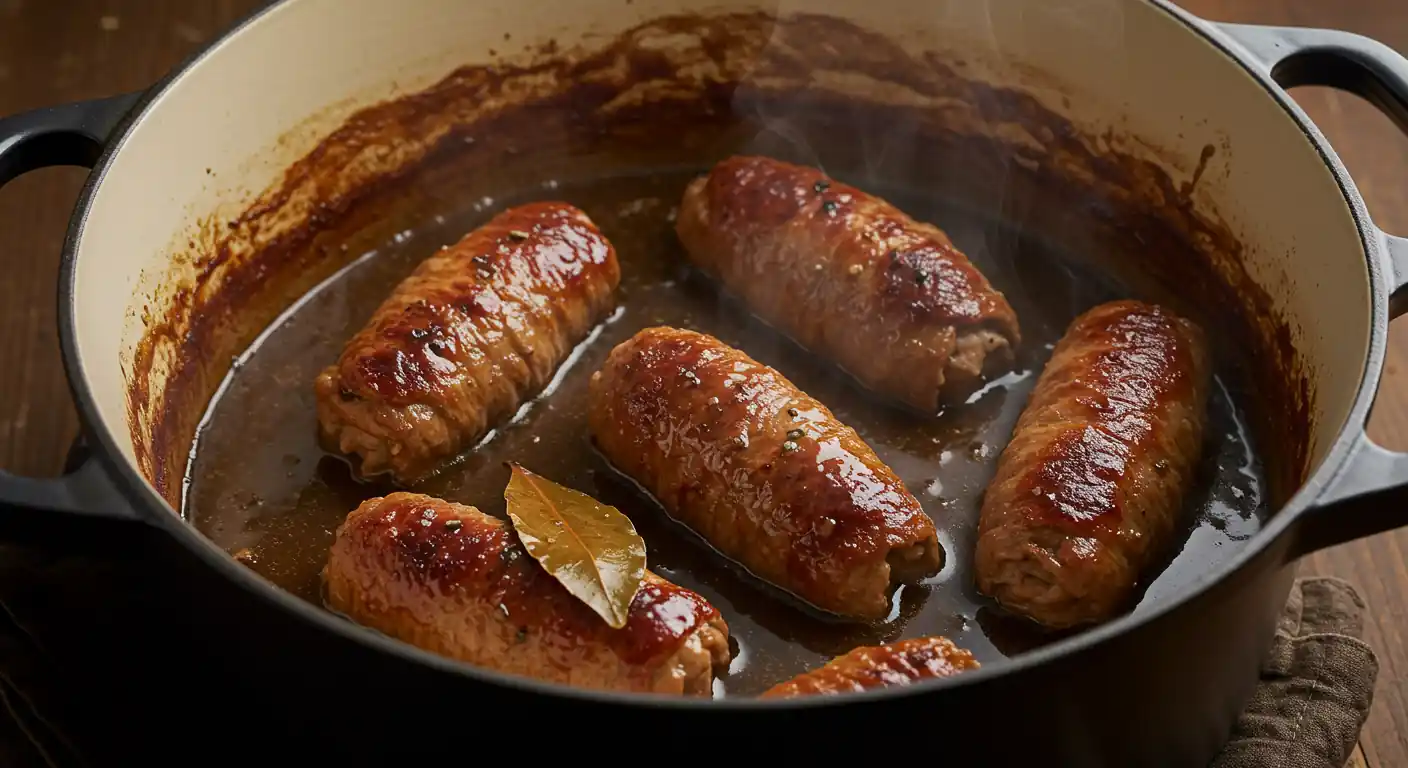
- Return Rouladen to Pot: Carefully place the seared Rouladen back into the pot with the braising liquid. The liquid should come about halfway to two-thirds up the sides of the rolls. Add more broth if needed.
- Simmer Gently: Bring the liquid back to a gentle simmer. Then, reduce the heat to low, cover the pot tightly, and let the Rouladen braise slowly.
- Cook Until Tender: Let the Rouladen simmer for at least 1.5 hours, or preferably 2 to 2.5 hours. The longer they braise gently, the more tender they will become. Check occasionally to ensure the liquid hasn’t evaporated too much; add a splash more broth or water if needed. They are ready when a fork easily pierces the meat. You can also do this step in a preheated oven at 325°F (160°C) instead of the stovetop.
Step 6: Make the Gravy
- Remove Rouladen: Once tender, carefully remove the cooked Rouladen from the pot and set them aside on a warm plate. Tent loosely with foil to keep warm. Remember to remove the twine or toothpicks before serving!
- Strain the Sauce (Optional): For a smoother gravy, pour the braising liquid through a fine-mesh sieve into a clean saucepan, pressing gently on the solids to extract maximum flavor. Discard the solids. If you prefer a more rustic gravy with the vegetable bits, you can skip straining or partially blend the sauce with an immersion blender.
- Thicken the Gravy (If Needed): Bring the strained (or unstrained) liquid back to a simmer. If the gravy is thinner than you like, whisk together the cornstarch and cold water to create a slurry. While whisking the simmering gravy constantly, slowly pour in the slurry a little at a time until the gravy reaches your desired consistency. Let it simmer for another minute or two to cook out the raw starch taste.
- Season: Taste the gravy and adjust seasoning with salt and pepper as needed. It should be rich and flavorful.
Step 7: Serve
- Serve: Place one or two warm Rouladen rolls on each plate. Generously ladle the rich gravy over the top.
- Enjoy: Serve immediately with your favorite side dishes (see suggestions below).
Tips for Success
- Choose the Right Beef: Thinly sliced top round is classic. Flank steak can work but might need more pounding. Ask your butcher for help!
- Pound it Right: Don’t skip pounding the beef thin. It makes a huge difference in tenderness and ease of rolling.
- Don’t Overfill: Be generous but reasonable with the filling, or the Rouladen will be difficult to roll and might burst.
- Secure Tightly: Whether using twine or toothpicks, ensure the rolls are secure so they don’t unravel during cooking.
- Get a Good Sear: Browning the Rouladen builds a deep flavor foundation for the dish and the gravy. Don’t rush this step.
- Low and Slow Braise: Patience is key. Gentle simmering over a long period is what makes the beef incredibly tender. Don’t boil them rapidly.
- Taste and Adjust: Always taste your gravy before serving and adjust salt and pepper. A splash of cream or a knob of butter at the end can add extra richness if desired.
What to Serve with Rouladen
Rouladen practically begs for side dishes that can soak up that incredible gravy. Classic pairings include:
- Potato Dumplings (Kartoffelklöße): The quintessential German side
- Mashed Potatoes: Creamy mashed potatoes are always a winner.
- Spaetzle: German egg noodles are perfect for catching the gravy.
- Boiled Potatoes: Simple boiled potatoes tossed in butter and parsley work beautifully.
- Red Cabbage (Rotkohl): Braised sweet and sour red cabbage provides a lovely contrast to the rich beef.
- Green Beans: Simple steamed or sautéed green beans add a touch of freshness.
Storing and Reheating
- Storage: Leftover Rouladen and gravy can be stored in an airtight container in the refrigerator for up to 3-4 days. Like many braised dishes, the flavor often deepens and improves the next day!
- Freezing: Cooked Rouladen freezes well. Place the rolls and gravy in a freezer-safe container or bag. Thaw overnight in the refrigerator before reheating.
- Reheating: Gently reheat Rouladen and gravy in a saucepan over low heat or in the microwave until heated through. Avoid boiling, which can toughen the meat.
Rouladen FAQs
- Can I use a different kind of meat? While beef (Rinderrouladen) is traditional, pork or veal slices can also be used to make Rouladen. Cooking times might need slight adjustment.
- Can I make Rouladen ahead of time? Absolutely! Rouladen is a great make-ahead dish. You can prepare and cook it completely a day or two in advance and simply reheat before serving. The flavors often meld and improve.
- Why are my Rouladen tough? This usually happens if the beef wasn’t pounded thin enough, if it was cooked too quickly at too high a temperature (boiling instead of simmering), or not cooked long enough. Low, slow, and moist heat is crucial.
- What kind of pickles should I use? German Gewürzgurken are ideal for their specific flavor profile, but any good quality dill pickle works well. Avoid sweet pickles.
Ready to Make Some Amazing Rouladen?
Making Rouladen is a rewarding cooking experience that results in a truly special meal. It’s a taste of German tradition, perfect for sharing with family and friends. Don’t let the steps intimidate you; follow this guide, take your time, and enjoy the process. The rich flavors and tender beef will be well worth the effort. Happy cooking!

